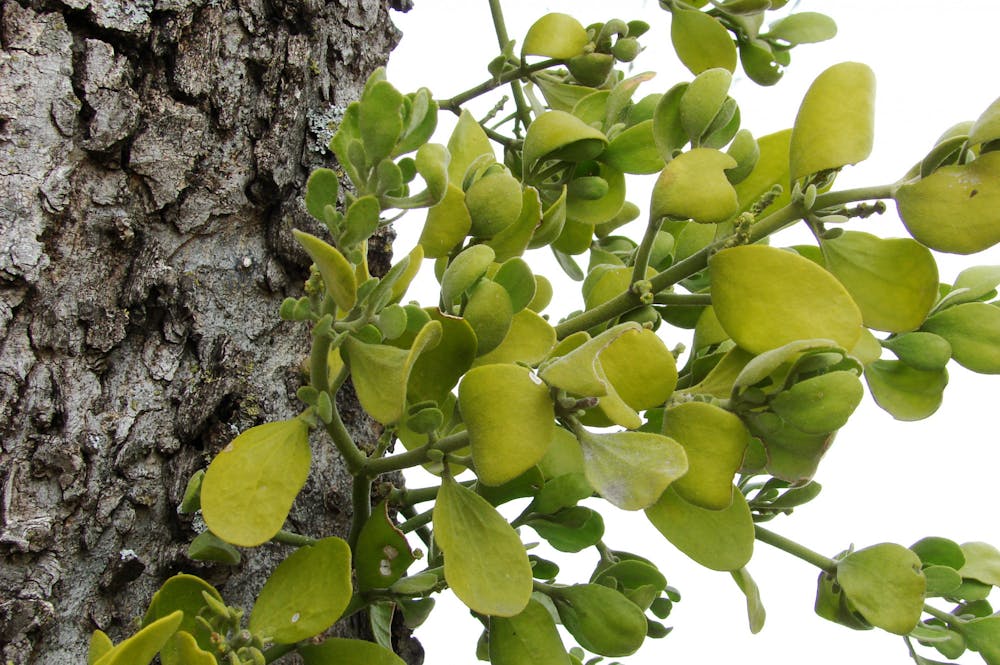A team from the Sidney Kimmel Comprehensive Cancer Center conducted its early research trial evaluating intravenous mistletoe extract (Helixor-M) in cancer cases. The trial was published in Cancer Research Communications.
Mistletoe extract has long been used in Europe, particularly within German-speaking countries, as a supportive therapy to manage the side effects of cancer or more intensive cancer treatments. In fact, it is one of the most highly prescribed supportive therapies for cancer in those countries, often covered by medical insurance. Supportive therapies are essential components of a patient’s regimen which can help with emotion, pain, mental-wellbeing and can even improve survival.
The team was led by Associate Professor of Oncology and Director of Prostate Cancer Clinical Research Channing Paller. Paller has an extensive track record of working in different clinical trials evaluating anticancer treatments, especially for renal and prostate cancers.
In an email to The News-Letter, Paller described the specific benefits of Helixor-M.
“Mistletoe has immunomodulatory, cytotoxic and anti-inflammatory effects which can act to help fight cancer cells directly or support immune function,“ she wrote. “Mistletoe extract may be different from other therapies in that there is some data that it may be able to improve a cancer patient’s quality of life by reducing chemotherapy-induced side effects,[...] allowing patients to tolerate therapy for longer periods of time.”
Mistletoe contains a hodge-podge of biomolecules that differ in composition depending on which plant it is extracted from. However, the source of its anticancer properties originates from specific proteins called lectins. Vitro experiments assessing mistletoe showed an increase in cytokines, which control immune cell signaling, matching the results in this clinical trial.
21 patients were enrolled in the trial, all with advanced and treatment-resistant cancer cases. The study assessed different Helixor-M dose levels and found that the highest dose that the patients could withstand was 600mg, delivered intravenously. The median stable disease was 15 weeks and was up to six months for two patients. Additionally, three cases saw a reduction in tumor size.
“The greatest tumor reduction was seen in ovarian and goblet cell carcinoid tumors. Stable disease was also seen in neuroendocrine, salivary and colon cancer patients,” Paller wrote.
Patients taking Helixor-M also reported improved quality of life via questionnaire. Side effects of Helixor-M included fatigue, nausea and chills, all of which were described as manageable.
Paller is optimistic about future plans to test Helixor-M in phase II trials, which are performed to quantify the effectiveness of the therapy. These trials will gather data on the best frequency of administration and how well Helixor-M can improve quality of life compared to other supportive therapies.
Additionally, Paller is interested to see whether higher dosages and treatment effectiveness can be obtained in earlier-stage cancers.
“Currently, we are having ongoing discussions about mistletoe in combination with standard-of-care therapy at earlier stages of the disease,“ she wrote. “As [Helixor]-M is often used in ovarian and colon cancer and at least one of each of those types of patients was seen in our stable disease group and had improved quality of life. We are definitely considering those patients in future studies.”
She commented on the synergistic use of Helixor-M with other therapies to increase patient resilience. For example, it could be paired with chemotherapy or other targeted therapies to help treat cancer and decrease the side effects of the main treatments.
“One of mistletoe therapy’s greatest strengths is that it works synergistically with other approaches by heightening the immune response and the overall resilience of the patient,“ she wrote. “Things like depression, appetite, fatigue, etc. are often improved which also have secondary benefits in the treatment of cancer.”
Future clinical trials, if successful, would allow Helixor-M to gain FDA approval.





